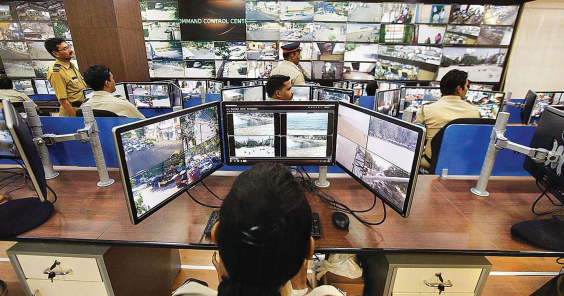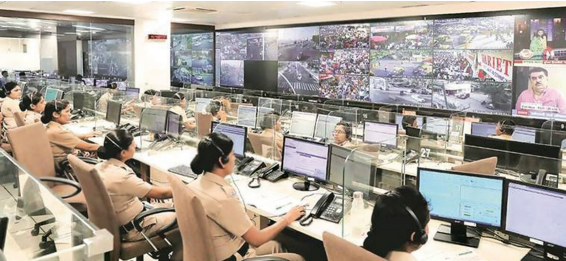Advocate Salman Sabuani is a specialist in matters concerning legal strategy, fraud by companies, white collar crime, forensic accounting, corporate and individual debt recovery, medical negligence cases, and property encroachment matters.
I am writing this series of articles to help readers gain a better understanding of their interactions with law enforcement agencies. By clarifying key legal concepts and explaining recent changes, I aim to provide valuable insights that will benefit not only the average citizen but also serve as a helpful resource for law enforcement officers. These articles will bridge the knowledge gap, empowering individuals to understand their rights and responsibilities, while also assisting police personnel in grasping the practical implications of the new legal framework in their daily duties.
Whether you are a citizen trying to navigate the legal system or an officer enforcing the law, clear comprehension of substantive and procedural laws is crucial for ensuring justice and fairness for all. This series will discuss not only the substantive aspects of law but also emphasise procedural rights, which are essential for navigating the criminal justice system.
To begin, it is essential to understand the distinction between substantive and procedural laws. Substantive laws define the rights, liabilities, and obligations of individuals while procedural laws outline the steps necessary to enforce those rights and obligations. In other words, substantive laws answer the “what” of the law, and procedural laws explain the “how.”
For over a century, India’s criminal justice system has been guided by three foundational laws:
1. The Indian Penal Code (IPC), 1860 – This law defines what constitutes criminal offences in India and specifies the punishments for those offences.
2. The Code of Criminal Procedure (CrPC), 1973 – This law governs the procedures for investigation, prosecution, and trial of offences.
3. The Indian Evidence Act, 1872 – This law establishes the rules of evidence, determining what can be admitted or relied upon in a court of law.

The Shift to New Laws: Reasons and Methods
Recently, long-standing laws have been replaced with updated versions in the form of the Bharatiya Nyaya Sanhita (BNS), 2023, the Bharatiya Nagarik Suraksha Sanhita (BNSS), 2023, and the Bharatiya Sakshya Adhiniyam (BSA), 2023. The primary reasons for this overhaul include:
1. Colonial Legacy of Old Laws – The Indian Penal Code (IPC), Criminal Procedure Code (CrPC), and Evidence Act were products of the British colonial administration, created primarily to maintain law and order in a colony. These laws were designed with a colonial mindset, focusing on control rather than justice for citizens. As India has evolved into a democratic republic, it has become essential to update these laws to reflect the values of independence, fairness, and efficiency often lacking in the older framework.
2. Evolving Nature of Crime – Crimes today are far more complex and varied than when the original laws were drafted. Matters like cybercrime, economic offences, transnational crimes, organised syndicates, and terrorism have emerged as significant challenges that the old laws were not adequately equipped to handle. The need to address these modern challenges through a more dynamic and responsive legal framework has prompted the introduction of the BNS, BNSS, and BSA.

3. Inefficiency and Delay – Over time, the old legal framework was criticised for inefficiency and causing significant delays in the criminal justice process. With some cases taking years, and even decades, to resolve, there was an urgent need to streamline procedures and improve the speed of trials to ensure that justice was delivered more promptly.

4. Balancing Rights and Punishment – Another key factor was the need to align punishments and legal procedures with modern values, ensuring a balance between the rights of the accused and the rights of victims. The new laws aim to maintain procedural safeguards while preventing justice from being delayed or denied due to overly complicated or outdated legal formalities.
Key Replacements
1. Bharatiya Nyaya Sanhita (BNS), 2023 – This law replaces the Indian Penal Code (IPC) and addresses criminal offences. It focuses on simplifying legal language and aligning punishments with modern values and societal expectations. The BNS aims to ensure faster trials and judgments by establishing clear provisions to prevent procedural delays.
2. Bharatiya Nagarik Suraksha Sanhita (BNSS), 2023 – The BNSS replaces the Code of Criminal Procedure (CrPC) and emphasises procedural reforms to enhance the efficiency of the criminal justice system. It introduces mechanisms for faster investigations and trial processes, while also addressing new categories of offenses, including cybercrimes and transnational offences.
3. Bharatiya Sakshya Adhiniyam (BSA), 2023 – This law replaces the Indian Evidence Act and updates the rules of evidence to reflect modern realities, particularly concerning digital evidence and globalised crime. The BSA introduces clear guidelines for admissibility, ensuring that the justice system is more transparent and responsive to contemporary challenges.

Why the Change?
The primary objectives of the new laws are:
(a) To modernise the legal framework to align with the complexities of today’s world.
(b) To move away from the colonial legacy and establish laws reflecting the values of an independent and democratic India.
(c) To enhance efficiency by reducing delays in the judicial process, ensuring quicker access to justice.
(d) To address new crimes, such as cybercrime, organised crime, and terrorism, which were not adequately covered by the previous legal framework.
(e) To align punishments and procedures with contemporary societal values, striking a balance between fairness and deterrence in criminal behaviour.
Interplay Between Special Laws and New Reforms
The BNS, BNSS, and BSA represent a significant overhaul of India’s foundational criminal laws. However, the country’s legal landscape also includes several special laws designed to address specific types of crime, such as terrorism and organised crime. These laws provide tailored frameworks to handle complex offences that require exceptional measures. Some of the key special laws include:
1. Unlawful Activities (Prevention) Act (UAPA), 1967 – The UAPA focuses on preventing and addressing terrorism and unlawful activities that threaten India’s sovereignty and security.
2. Maharashtra Control of Organised Crime Act (MCOCA), 1999 – This law aims to combat organised crime syndicates and grants law enforcement special powers to address cases involving criminal networks.
3. Prevention of Money Laundering Act (PMLA), 2002 – This law aims to prevent money laundering by ensuring that the proceeds from criminal activities are tracked and confiscated.
4. Narcotic Drugs and Psychotropic Substances Act (NDPS), 1985 – The NDPS Act addresses drug-related offences, including the production, sale, and trafficking of narcotic and psychotropic substances.
5. National Security Act (NSA), 1980 – This Act allows for the preventive detention of individuals whose actions pose a threat to national security or public order.
6. Armed Forces (Special Powers) Act (AFSPA), 1958 – AFSPA grants special powers to the armed forces in “disturbed areas,” enabling them to maintain law and order in regions prone to insurgency.

Law Enforcement Agencies
The enforcement of laws and the overall criminal justice system are supported by various agencies that play crucial roles in law enforcement. Some of the major agencies include:
1. State Police Forces – They are responsible for maintaining law and order at the State level, investigating crimes, and ensuring public safety.
2. Central Bureau of Investigation (CBI) – A premier investigative agency that handles high-profile criminal cases, corruption, and complex economic crimes.
3. Enforcement Directorate (ED) – It focuses on enforcing economic laws and combating financial crimes, particularly money laundering under the Prevention of Money Laundering Act (PMLA).
4. National Investigation Agency (NIA) – This agency is responsible for dealing with terrorism and other national security threats.
5. Directorate of Revenue Intelligence (DRI) – The DRI investigates and combats economic offences, smuggling, and customs-related crimes.
6. Narcotics Control Bureau (NCB) – The NCB focuses on enforcing the Narcotic Drugs and Psychotropic Substances Act (NDPS) and tackling drug-related crimes.
7. Serious Fraud Investigation Office (SFIO) – The SFIO investigates corporate fraud and financial irregularities.
8. Income Tax Department – This department monitors tax evasion and financial crimes.
9. Financial Intelligence Unit (FIU-IND) – The FIU-IND is responsible for collecting and analysing financial intelligence related to money laundering and terrorist financing.
All these agencies play a vital role in enforcing general and specialised laws, ensuring a robust legal framework that responds effectively to various forms of criminal activity.
In upcoming articles, I will explore the interplay between these specialised laws and the broader legal system, examining how they work together or in opposition. This will provide law enforcement agencies with the necessary legal tools to address complex offences such as terrorism, organised crime, and money laundering. Stay tuned for more insights on how these changes will shape interactions between citizens and law enforcement in the coming years.






